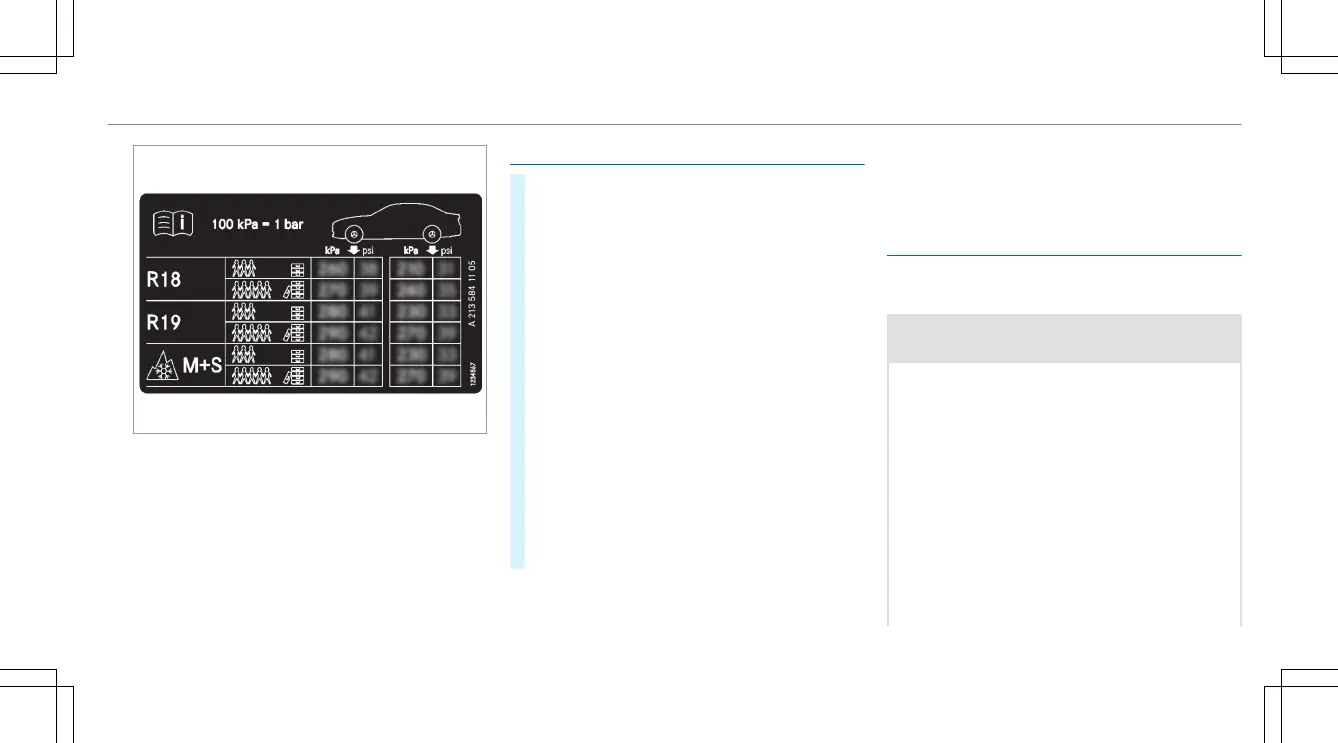Some tire pressure tables only show the rim
diameter instead of the complete tire size, e.g.
R18. The rim diameter is part of the tire size and
can be found on the tire side wall (/ page 320).
R
Tire and Loading Information placard
(/ page 313)
R
Maximum tire pressure (/ page 319)
Checking tire pressures manually
#
Read the tire pressure for the current operat‐
ing conditions from the Tire and Loading
Information placard or the tire pressure
table. Observe the notes on tire pressure.
#
Remove the valve cap of the tire to be
checked.
#
Press the tire pressure gauge securely onto
the valve.
#
Read the tire pressure.
#
If the tire pressure is lower than the recom‐
mended value, increase the tire pressure to
the recommended value.
#
If the tire pressure is higher than the recom‐
mended value, release air. To do so, press
down the metal pin in the valve, e.g. using
the tip of a pen for example. Then check the
tire pressure again using the tire pressure
gauge.
#
Screw the valve cap onto the valve.
Further related subjects:
R
Notes on tire pressure (/ page 306)
R
Tire pressure table (/ page 308)
R
Tire and Loading Information placard
(/ page 313)
Tire pressure monitoring system
Function of the tire pressure monitoring sys‐
tem
&
DANGER Risk of accident due to incor‐
rect tire pressure
Each tire, including the spare (if provided),
should be checked monthly when cold and
inflated to the inflation pressure recommen‐
ded by the vehicle manufacturer on the vehi‐
cle placard or tire inflation pressure label. (If
your vehicle has tires of a different size than
the size indicated on the vehicle placard or
tire inflation pressure label, you should deter‐
mine the proper tire inflation pressure for
those tires.)
As an added safety feature, your vehicle has
been equipped with a tire pressure monitor‐
ing system (TPMS) that illuminates a low tire
Wheels and tires
309

